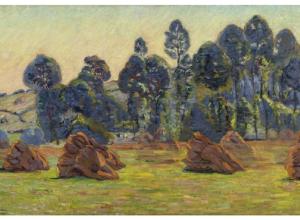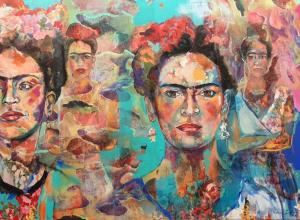Sarah Amos
Few artists have been as innovative within the parameters of a particular medium as printmaker Sarah Amos. Originally from Australia, Amos now divides her time between her native country and her studio in her adopted home base of East Fairfield, VT. Amos left Australia with a BFA degree and later earned an MFA from the Univer-sity of Northern Vermont while working as a Master Printer for the Vermont Studio Center Press from 1988 to 2008. She also attended the Tamarind Institute of Lithography in New Mexico, becoming a certified Master Printer in 1992. The evolution of her processes of printmaking from this point forward is the very essence of the definition of an entrepreneurial mindset. Amos proceeds to go where no printmaker before her has gone.
Amos says, “I continually challenge and upend traditional stereotypes of printmaking, both physically and intellectually.” Her breakthrough came in 2014. “This was a pivotal moment in my career, symbolizing the beginning of a new phase. This exciting development was characterized by the fusion of textiles and printmaking—a marriage that was instantly harmonious. This union with printmaking was not merely a technical experiment; it represented a profound shift in my approach to my work.” Ultimately, Amos settled on huge swaths of felt which act as a foundation upon which she prints and layers a wide variety of stitching techniques in which threads replace drawn lines.
Unlike most printmakers, Amos works on a gigantic scale. Her totem-like, iconic imagery hints at Australian aboriginal influences but also references Persian carpets, Islamic tiles, and Gee’s Bend quilts, among other sources. All this is distilled into abstract shapes of bold color. Works are stretched on heavy, wide, custom-built frames that create the impression that these are objects hovering somewhere between two and three dimensions.
“Lately I’ve been contemplating the suitability of translating my artworks into wall reliefs,” Amos says. “ The technical hurdles in creating these new works keep me deeply engaged and immersed in the complexities of fabrication.” It seems clear that she is edging toward a new form, a hybrid medium of printed, stitched, sculpture. Her work has been exhibited widely, including at the CUE Art Foundation NY, ICA San Jose, and Cynthia Reeves Projects Mass MOCA, and she was an Artist in Residence Fellow at The Joan Mitchell Foundation New Orleans in 2020. In 2025, Amos’ work will be exhibited at The Patricia Sweetow Gallery in Los Angeles.
GALLERISTS
The high-end art market, fueled by auction records and encouraged by mega-galleries with corporation-size staffs, has sent prices for some artists’ work into the stratosphere. Word has it that the art boom has gone bust and that we are headed for an art-market correction. This has fostered a new wave of entrepreneurial gallerists employing a grassroots approach to attract the next generation of art buyers and collectors. Here are two gallerists whose innovation and tenacity caught our attention.
Goldfinch Gallery
“I think of myself as an entrepreneur” says Claudine Isé, the founder of Goldfinch Gallery in Chicago. Located in a roughly 880-square-foot ground-floor space in a warehouse in East Garfield Park, the gallery is surrounded by dozens of artists’ studios that contribute to the vibrant, anything-goes atmosphere. “I’ve been working in the field of contemporary art for over 20 years,” Isé says, “and I’ve never once felt like that work was getting boring or stale. I think that’s because when you work with contemporary artists, like I do, you’re on a constant mission of discovery.”
Isé started her art journey in Los Angeles, earning a Ph.D. in film, literature, and culture from the University of Southern California. She began working in the curatorial department of the Hammer Museum in L.A. and then moved on to the Wexner Center for the Arts in Columbus, Ohio, where she was the Associate Curator of Exhibitions. She focused on scouting new talent, “putting the work of young contemporary artists into context through exhibitions and catalogue writing, showing how the ideas in an artist’s work relate to big ideas happening cross-culturally in music, film, television, and fashion.”
As a young mother, with a new baby, Isé moved to Chicago with her husband. It was easier at that point to focus on writing about art for the Chicago Tribune and Chicago magazine, editing a blog for Art21.com, and teaching part-time. “I always wanted my own space, my own gallery,” she says, “but the business part of art seemed intimidating.” She finally overcame her fears and opened Goldfinch in 2016. “It was like a leap over a cliff,” Isé recalls. “I decided to go the commercial route rather than non-profit when I realized I enjoyed the selling part of art.”
“It’s a tough business to be in,” Isé admits, “but after eight years, it’s still a challenge I relish. I’m a risk taker, but my risks are calculated. Now I have a roster—I work with emerging and mid-career Chicago artists, and I have a responsibility to them.” As a gallerist, her eye is also evolving. “We have an interest in paintings that reveal the artist’s hand, mark-making, painterly paintings,” she says. “I also love quirky objects, charismatic objects.”
PENTIMENTI
The vestiges of Philadelphia gallerist Christine Pfister’s earlier life in Switzerland can be heard in her voice as she shares her atypical path to a career as a curator and art dealer. “I don’t come from a family in the arts,” she explains. “It was my husband who studied art. I was a businesswoman. A trip to Florence with a close friend was the trigger that ignited my interest in art.” Her husband had opened a gallery in 1992, three years before their marriage, as a side business, naming it “Pentimenti” after the art-historical term for changes made by an artist during the process of painting. It was not profitable. “He asked if I was interested in taking the gallery over, and I cautiously agreed to try it for six months, no guarantees,” Pfister recalls.
Thirty years later, it’s still in business—extraordinary longevity for the art world—and still in the same location, a former 18th-century tavern in a thriving arts district. “Within two city blocks surrounding PENTIMENTI there are 11 art galleries and five high-end design and architecture firms,” Pfister says.
Pfister was trained as a statistician, so she keeps track of things like foot traffic as well as inventory and sales. “Initially, I observed how the gallery was run,” she recalls. “I took classes at Christie’s. Now I completely run it. At PENTIMENTI my chief responsibility is to serve my artists. I program 21 established artists and regularly introduce emerging guest artists in two separate spaces.” Pfister builds relationships with clients who may be starting a collection or looking to live with art in their homes. She has learned “how important visibility at art fairs has become in building a sustainable business model. I get to meet our online collectors at art fairs. And, here I am, after all these years, still loving what I do.”

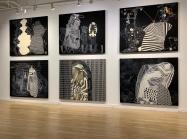

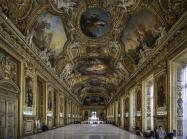
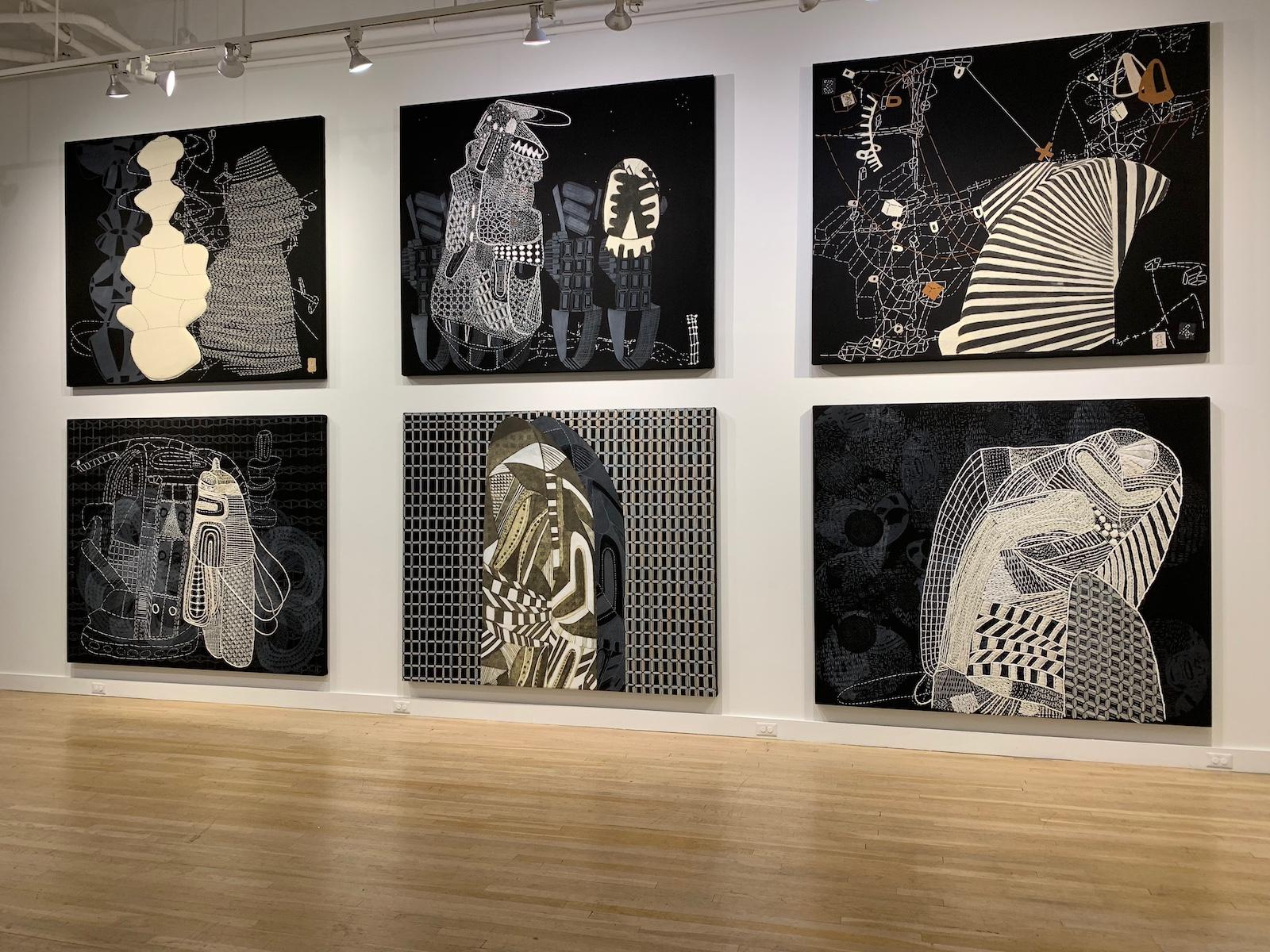

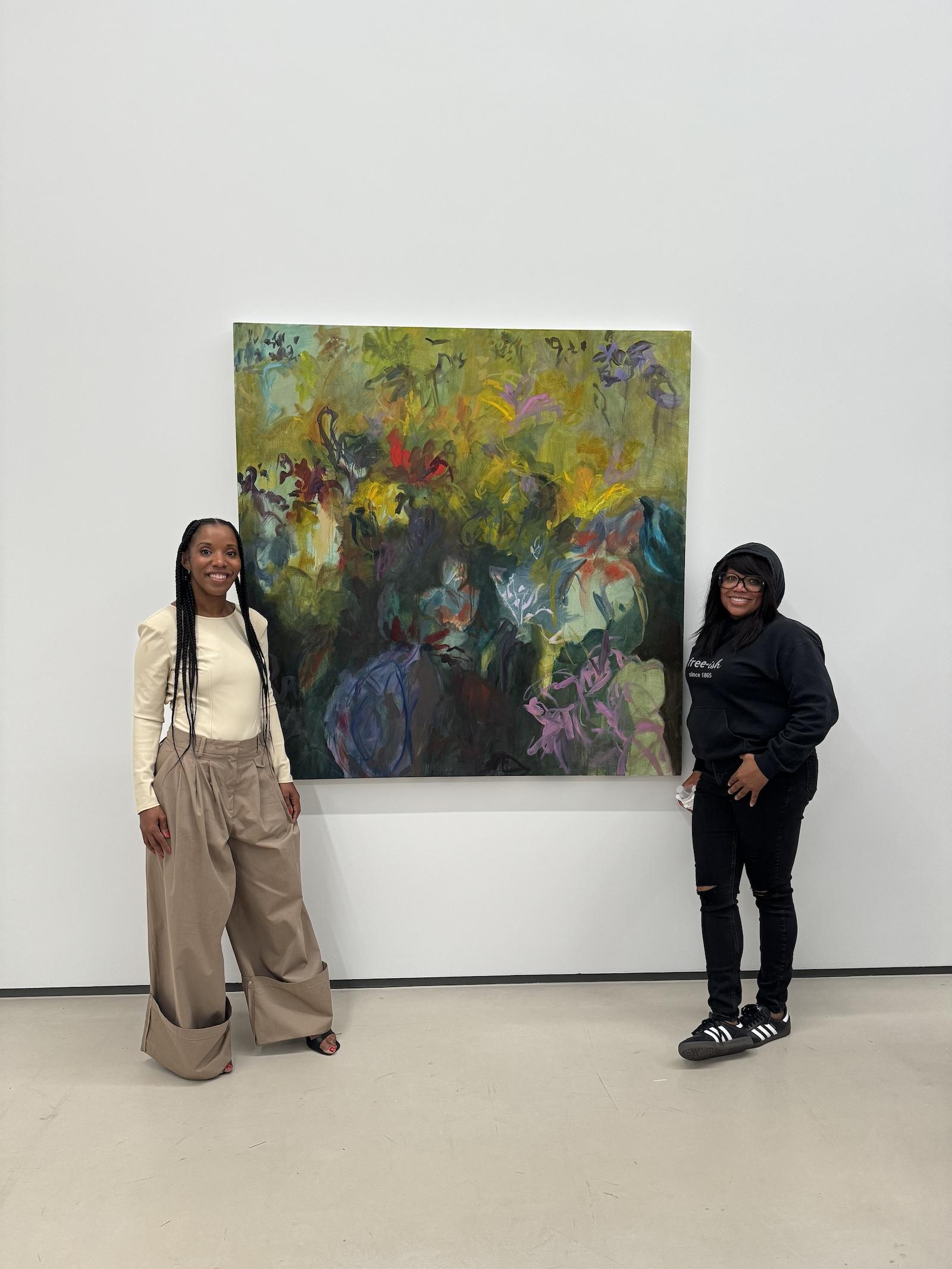
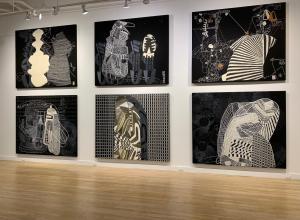

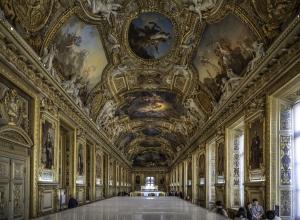



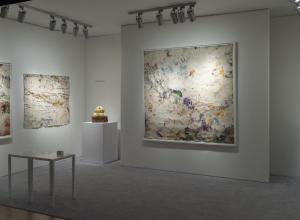

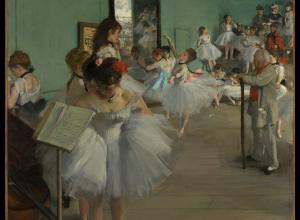
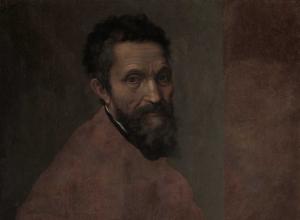

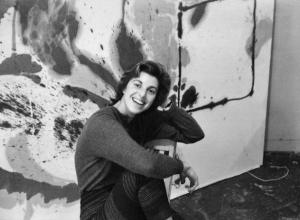
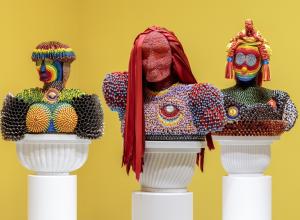


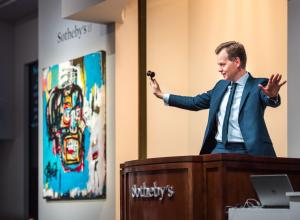


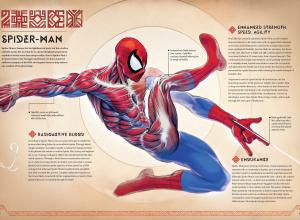

![DEl Kathryn Barton [Australian b. 1972] the more than human love , 2025 Acrylic on French linen 78 3/4 x 137 3/4 inches 200 x 350 cm Framed dimensions: 79 7/8 x 139 inches 203 x 353 cm](/sites/default/files/styles/image_5_column/public/ab15211bartonthe-more-human-lovelg.jpg?itok=wW_Qrve3)
